Opinion & Analysis
Read about Justin Rose’s putting coach, David Orr
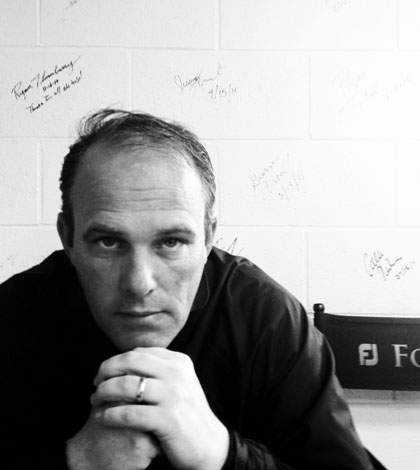
In and of itself, the structure is unremarkable.
The dimensions of the building are of smallish proportion and the concrete block is in need of pressure washed scrutiny; at the base of the front awning, the numerals of the address plate hang in a casual state of limbo.
But as with most things, the exterior counts for little; for it is inside, just a step over the threshold, where some of the game’s finest players are redefining their approach to putting.
Scrawled in varying degrees of penmanship, and occupying a corner section of David Orr’s Buies Creek, N.C., putting studio, are the signatures of some of the world’s most prominent touring professionals.
More so than a novelty, they diagram the current needle position of a career arc remarkably polished, yet completely unfinished.
Rose. Molinari. Castro. Wi. Cheyenne Woods. A global consortium, if you will — one that stretches from North Carolina to Asia, and all points in between.
The wall is a unique tableau — only full-field entrants in golf’s major championships and those exempt on worldwide professional tours may leave their mark — and is the constellation matrix of Orr’s career in the game of golf. It represents 23 years of diligent research, practical application and sustained personal relationships.
He clearly laments the facility’s untidy appearance, but his students prefer it this way. “They really love it,” he explains. “I’ve been told not to change a thing.”
And whether by Gulfstream V or Ford Taurus, his students arrive to stand their post in Orr’s lifelong battle against, in his words, “being average.”
If the modern game is synonymous with cozy lifestyles, posh settings and uncommon perks, Orr’s sanctuary represents its raw antithesis. Amidst a stockade of old putter models and diagnostic tools, commitment is reaffirmed. Important decisions are made. The finite, despite his background in technical analysis, is communicated in plain language.
There are periodic notions to alter its condition, sure; but he simply does not enjoy the time required by such a task.
Class, it seems, is always in session.
It’s 2 p.m., and a small group ambles into the studio, each dressed in the familiar patterns of a Tour player. Ranging in age from 18 to 21, they are present to discuss their individual progress against the bar of the PGA’s playing ability test.
If brevity is indeed the soul of wit, then hard data is David Orr’s deoxyribonucleic imprint.
“Is 18 inches past the hole a speed?” he asks. “No. It’s a distance. And what would make it an actual speed?”
His students, neither lost nor disengaged, ponder the question. And while their individual opinions vary, they reach the desired common ground with assistance from Orr’s guiding hand.
“It’s feet per second,” he explains, “so what’s in the denominator? Time. That’s break. That’s touch. Curve is the roll time.”
His point is ultimately quite simple — one’s level of awareness, with specific regard to personal space, must be developed in order to construct a functional cache of putting skills.
“Here’s what the golfer doesn’t realize. Let’s say we had a 10-foot putt, zero point zero slope. No break, no nothing,” he explains. “One degree open is right edge. One degree closed is left edge. Now let’s add a 2 percent slope, putting at an angle — what just happened to the capture width of the hole? The cone just shrinks.”
For lack of a more sophisticated phrase, it’s mad science.
“No. It’s measurement,” he says. “There’s a big difference in being technical and being accurate. I disagree that great putters are born. I think great putters learn their tendencies and use them; they don’t fight them.”
The hour has slipped into rear view, and Orr is now standing atop a table in a room behind the Keith Hills golf shop. At issue is the short game concept of controlling the radius — in other words, what is lengthening and shortening during a player’s chipping motion.
“The reason why the average golfer has the chip yips is because they’ve set up to hit a low shot, and in their mind they are trying to hit a high, soft shot,” he reasons.
This session, presented to a graduate level contingency of Campbell University’s Professional Golf Management (PGM) Program, is canted in the direction of real world application — paper theory, he suggests, simply does not register with everyone.
“Put a ball about a foot from the edge of a mat,” he explains, “and try to get it on the ground as quickly as possible. What is that teaching them (students) to do? The ball goes in the air because of the loft, not because of the angle of attack.”
His message, rooted in one’s ability to communicate, is equal parts Daniel Kaffee from ‘A Few Good Men’ and professor John Keating from ‘Dead Poet’s Society’ — unafraid of the truth, its potential impact on a student’s psyche, and a coach’s willingness to walk a different path to generate success.
Over the years, Orr has employed this concept to successfully transit from a full-swing coach to a specialized entity — one who helps players motivate the golf ball to disappear with increased regularity, regardless of ability, green complex or high-stakes environment.
To that end, Orr respects the sweat equity of his students. In a game full of five footers, he prefers to place more value on the person standing over the putt — or the future instructor, for that matter — than the putt itself.
“People skills,” he exclaims. By his estimation, they make or break any professional, regardless of occupation. And as his students well know, they are non-negotiable.
“What’s work?” he asks. “It’s what you actually accomplish. What’s effort? That’s putting energy toward something, right? So, work is what you actually accomplish. Do you want to be average?”
Perhaps it is John Wooden who best captures the breadth of David Orr’s substance. The iconic UCLA basketball coach, whose dynastic teams won seven consecutive NCAA Division I titles, operated on a simple premise: Failure to prepare is preparing to fail.
“Here’s the thing about it,” he explains. “The brain works off movement, plans and strategies. You react to the plan.” To further this notion, he leans forward, saying, “We don’t give tips around here. We figure out what you’re doing. This is what you need to work on; go work on it.”
For many involved in the high profile web of a Tour player’s corporation, life can become difficult. Even for the world’s most sought after instructors, the balancing act can be difficult to manage. What begins as a working relationship can quickly flash into something complex and unyielding, and ultimately, distant.
Orr, however, remains grounded in the culture he has helped define at Campbell University. For students at “The Creek,” it is solely about the work. The environment is pure — wholly devoid of ego, personalized social media presence, entitlement or the high art of resting upon one’s laurels.
Ever the perfectionist, one would be hard pressed to imagine Orr anything less than excited about passing on what he has learned from countless others over his career.
“At Wells Fargo last year, I was walking back from the short game area with TJ Yeaton — who went through the program here — and we saw this kid down in a bunker,” he says, smiling, clearly fond of the memory. “It was another one of our guys, Jorge Parada (currently the instructor for Jonas Blixt).
“That was pretty neat. Moments like that are the most rewarding. They’re the fruits of your labor.”
Any coach worth his salt will tell you that creating a running sense of leverage often means success for his players. Suffice to say, this concept has allowed Orr to forge ahead in his scaled battle of work versus a job, of success versus being average.
For many in professional golf, life is scored in the harsh ledgers of longevity and winning percentage. Orr, however, views the matter differently, and does so through the looking glass of time well spent.
“I’m very fortunate,” he explains. “I don’t want to be rich, and I don’t want to be famous. I just want to be comfortable with what I do, and grateful for the relationships I have.”
At present, he appears content; almost relaxed. But that posture does not have much of a shelf life. There is a private lesson in five minutes, and more time to be spent refining the studio.
For David Orr, the writing is clearly on the wall.
Opinion & Analysis
The 2 primary challenges golf equipment companies face

As the editor-in-chief of this website and an observer of the GolfWRX forums and other online golf equipment discourse for over a decade, I’m pretty well attuned to the grunts and grumbles of a significant portion of the golf equipment purchasing spectrum. And before you accuse me of lording above all in some digital ivory tower, I’d like to offer that I worked at golf courses (public and private) for years prior to picking up my pen, so I’m well-versed in the non-degenerate golf equipment consumers out there. I touched (green)grass (retail)!
Complaints about the ills of and related to the OEMs usually follow some version of: Product cycles are too short for real innovation, tour equipment isn’t the same as retail (which is largely not true, by the way), too much is invested in marketing and not enough in R&D, top staffer X hasn’t even put the new driver in play, so it’s obviously not superior to the previous generation, prices are too high, and on and on.
Without digging into the merits of any of these claims, which I believe are mostly red herrings, I’d like to bring into view of our rangefinder what I believe to be the two primary difficulties golf equipment companies face.
One: As Terry Koehler, back when he was the CEO of Ben Hogan, told me at the time of the Ft Worth irons launch, if you can’t regularly hit the golf ball in a coin-sized area in the middle of the face, there’s not a ton that iron technology can do for you. Now, this is less true now with respect to irons than when he said it, and is less and less true by degrees as the clubs get larger (utilities, fairways, hybrids, drivers), but there remains a great deal of golf equipment truth in that statement. Think about it — which is to say, in TL;DR fashion, get lessons from a qualified instructor who will teach you about the fundamentals of repeatable impact and how the golf swing works, not just offer band-aid fixes. If you can’t repeatably deliver the golf club to the golf ball in something resembling the manner it was designed for, how can you expect to be getting the most out of the club — put another way, the maximum value from your investment?
Similarly, game improvement equipment can only improve your game if you game it. In other words, get fit for the clubs you ought to be playing rather than filling the bag with the ones you wish you could hit or used to be able to hit. Of course, don’t do this if you don’t care about performance and just want to hit a forged blade while playing off an 18 handicap. That’s absolutely fine. There were plenty of members in clubs back in the day playing Hogan Apex or Mizuno MP-32 irons who had no business doing so from a ballstriking standpoint, but they enjoyed their look, feel, and complementary qualities to their Gatsby hats and cashmere sweaters. Do what brings you a measure of joy in this maddening game.
Now, the second issue. This is not a plea for non-conforming equipment; rather, it is a statement of fact. USGA/R&A limits on every facet of golf equipment are detrimental to golf equipment manufacturers. Sure, you know this, but do you think about it as it applies to almost every element of equipment? A 500cc driver would be inherently more forgiving than a 460cc, as one with a COR measurement in excess of 0.83. 50-inch shafts. Box grooves. And on and on.
Would fewer regulations be objectively bad for the game? Would this erode its soul? Fortunately, that’s beside the point of this exercise, which is merely to point out the facts. The fact, in this case, is that equipment restrictions and regulations are the slaughterbench of an abundance of innovation in the golf equipment space. Is this for the best? Well, now I’ve asked the question twice and might as well give a partial response, I guess my answer to that would be, “It depends on what type of golf you’re playing and who you’re playing it with.”
For my part, I don’t mind embarrassing myself with vintage blades and persimmons chasing after the quasi-spiritual elevation of a well-struck shot, but that’s just me. Plenty of folks don’t give a damn if their grooves are conforming. Plenty of folks think the folks in Liberty Corner ought to add a prison to the museum for such offences. And those are just a few of the considerations for the amateur game — which doesn’t get inside the gallery ropes of the pro game…
Different strokes in the game of golf, in my humble opinion.
Anyway, I believe equipment company engineers are genuinely trying to build better equipment year over year. The marketing departments are trying to find ways to make this equipment appeal to the broadest segment of the golf market possible. All of this against (1) the backdrop of — at least for now — firm product cycles. And golfers who, with their ~15 average handicap (men), for the most part, are not striping the golf ball like Tiger in his prime and seem to have less and less time year over year to practice and improve. (2) Regulations that massively restrict what they’re able to do…
That’s the landscape as I see it and the real headwinds for golf equipment companies. No doubt, there’s more I haven’t considered, but I think the previous is a better — and better faith — point of departure when formulating any serious commentary on the golf equipment world than some of the more cynical and conspiratorial takes I hear.
Agree? Disagree? Think I’m worthy of an Adam Hadwin-esque security guard tackle? Let me know in the comments.
@golfoncbs The infamous Adam Hadwin tackle ? #golf #fyp #canada #pgatour #adamhadwin ? Ghibli-style nostalgic waltz – MaSssuguMusic
Podcasts
Fore Love of Golf: Introducing a new club concept

Episode #16 brings us Cliff McKinney. Cliff is the founder of Old Charlie Golf Club, a new club, and concept, to be built in the Florida panhandle. The model is quite interesting and aims to make great, private golf more affordable. We hope you enjoy the show!
Opinion & Analysis
On Scottie Scheffler wondering ‘What’s the point of winning?’

Last week, I came across a reel from BBC Sport on Instagram featuring Scottie Scheffler speaking to the media ahead of The Open at Royal Portrush. In it, he shared that he often wonders what the point is of wanting to win tournaments so badly — especially when he knows, deep down, that it doesn’t lead to a truly fulfilling life.
View this post on Instagram
“Is it great to be able to win tournaments and to accomplish the things I have in the game of golf? Yeah, it brings tears to my eyes just to think about it because I’ve literally worked my entire life to be good at this sport,” Scheffler said. “To have that kind of sense of accomplishment, I think, is a pretty cool feeling. To get to live out your dreams is very special, but at the end of the day, I’m not out here to inspire the next generation of golfers. I’m not out here to inspire someone to be the best player in the world, because what’s the point?”
Ironically — or perhaps perfectly — he went on to win the claret jug.
That question — what’s the point of winning? — cuts straight to the heart of the human journey.
As someone who’s spent over two decades in the trenches of professional golf, and in deep study of the mental, emotional, and spiritual dimensions of the game, I see Scottie’s inner conflict as a sign of soul evolution in motion.
I came to golf late. I wasn’t a junior standout or college All-American. At 27, I left a steady corporate job to see if I could be on the PGA Tour starting as a 14-handicap, average-length hitter. Over the years, my journey has been defined less by trophies and more by the relentless effort to navigate the deeply inequitable and gated system of professional golf — an effort that ultimately turned inward and helped me evolve as both a golfer and a person.
One perspective that helped me make sense of this inner dissonance around competition and our culture’s tendency to overvalue winning is the idea of soul evolution.
The University of Virginia’s Division of Perceptual Studies has done extensive research on reincarnation, and Netflix’s Surviving Death (Episode 6) explores the topic, too. Whether you take it literally or metaphorically, the idea that we’re on a long arc of growth — from beginner to sage elder — offers a profound perspective.
If you accept the premise literally, then terms like “young soul” and “old soul” start to hold meaning. However, even if we set the word “soul” aside, it’s easy to see that different levels of life experience produce different worldviews.
Newer souls — or people in earlier stages of their development — may be curious and kind but still lack discernment or depth. There is a naivety, and they don’t yet question as deeply, tending to see things in black and white, partly because certainty feels safer than confronting the unknown.
As we gain more experience, we begin to experiment. We test limits. We chase extreme external goals — sometimes at the expense of health, relationships, or inner peace — still operating from hunger, ambition, and the fragility of the ego.
It’s a necessary stage, but often a turbulent and unfulfilling one.
David Duval fell off the map after reaching World No. 1. Bubba Watson had his own “Is this it?” moment with his caddie, Ted Scott, after winning the Masters.
In Aaron Rodgers: Enigma, reflecting on his 2011 Super Bowl win, Rodgers said:
“Now I’ve accomplished the only thing that I really, really wanted to do in my life. Now what? I was like, ‘Did I aim at the wrong thing? Did I spend too much time thinking about stuff that ultimately doesn’t give you true happiness?’”
Jim Carrey once said, “I think everybody should get rich and famous and do everything they ever dreamed of so they can see that it’s not the answer.”
Eventually, though, something shifts.
We begin to see in shades of gray. Winning, dominating, accumulating—these pursuits lose their shine. The rewards feel more fleeting. Living in a constant state of fight-or-flight makes us feel alive, yes, but not happy and joyful.
Compassion begins to replace ambition. Love, presence, and gratitude become more fulfilling than status, profits, or trophies. We crave balance over burnout. Collaboration over competition. Meaning over metrics.
Interestingly, if we zoom out, we can apply this same model to nations and cultures. Countries, like people, have a collective “soul stage” made up of the individuals within them.
Take the United States, for example. I’d place it as a mid-level soul: highly competitive and deeply driven, but still learning emotional maturity. Still uncomfortable with nuance. Still believing that more is always better. Despite its global wins, the U.S. currently ranks just 23rd in happiness (as of 2025). You might liken it to a gifted teenager—bold, eager, and ambitious, but angsty and still figuring out how to live well and in balance. As much as a parent wants to protect their child, sometimes the child has to make their own mistakes to truly grow.
So when Scottie Scheffler wonders what the point of winning is, I don’t see someone losing strength.
I see someone evolving.
He’s beginning to look beyond the leaderboard. Beyond metrics of success that carry a lower vibration. And yet, in a poetic twist, Scheffler did go on to win The Open. But that only reinforces the point: even at the pinnacle, the question remains. And if more of us in the golf and sports world — and in U.S. culture at large — started asking similar questions, we might discover that the more meaningful trophy isn’t about accumulating or beating others at all costs.
It’s about awakening and evolving to something more than winning could ever promise.

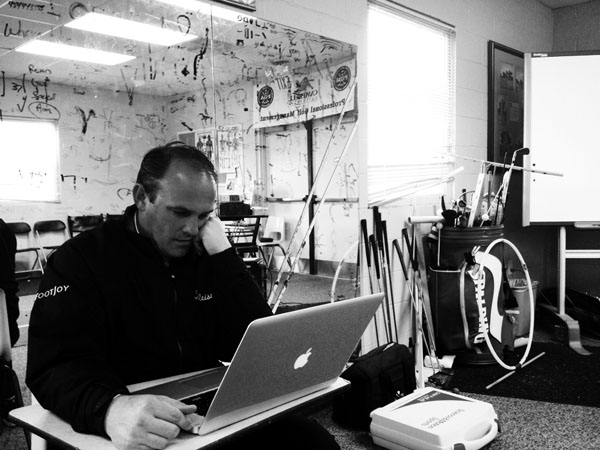

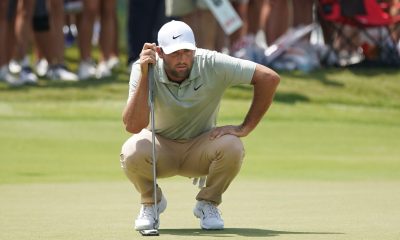



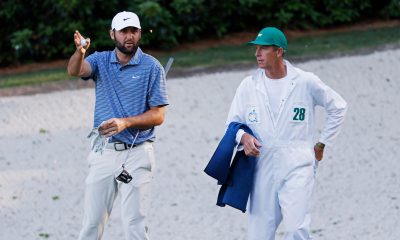





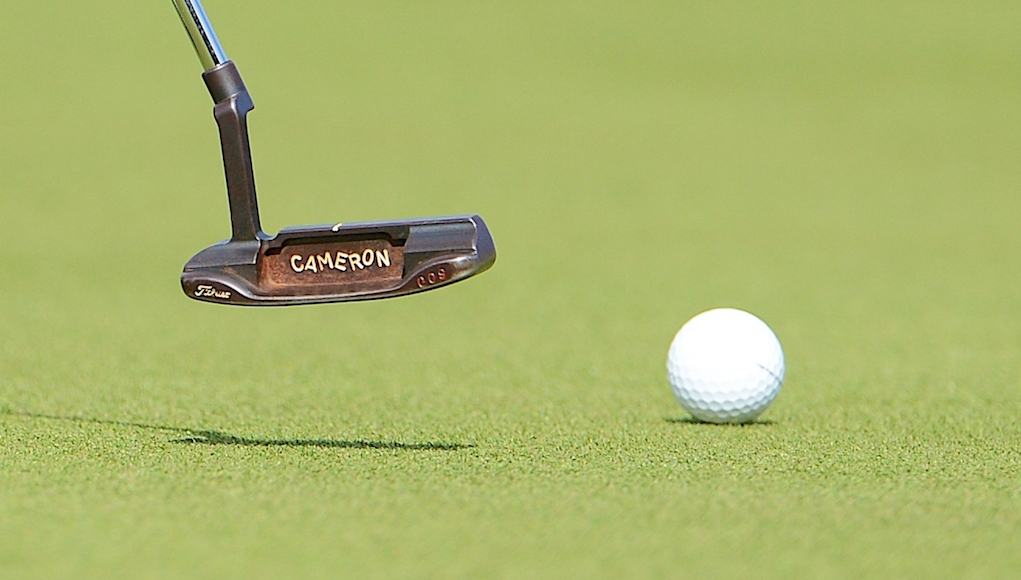








Honda Injeksi no.1 di Indonesia. Hebat, Hemat dan Mudah
Dec 15, 2013 at 2:12 am
Its like you learn my mind! You seem to understand a lot approximately this, such as you wrote the e book in it or something. I feel that you just can do with some p.c. to force the message home a bit, however instead of that, this is excellent blog. A fantastic read. I’ll definitely be back.
johnny
Mar 11, 2013 at 4:22 pm
have had the pleasure of spending a full day at the “creek”. david is a wealth of knowledge and a better man at that. one of the best experiences i have had. would love to go back in the next couple years
Pingback: 2013 Goal - Visit to David Orr, Putting Guru
Pingback: Meet putting guru David Orr | JR's site
Rufiolegacy
Mar 4, 2013 at 11:25 am
Interesting read here, and well written. I can honestly say that this is at the very lest inspiring to get back to the grind stone and practice. Off to the gym to prep for the season.
nick
Mar 3, 2013 at 6:36 pm
david orr is the truth. nuff said. he’s my coach and i wouldnt want anyone else looking at my putting stroke or full swing for that matter.
Phil Howard
Mar 2, 2013 at 7:35 pm
GREAT ARTICLE!! Thanks for sharing!!
siteseer2
Mar 2, 2013 at 10:07 am
David Orr is equal parts genius and humility…rare in the “me” golfworld in which he exists. Those who are fortunate enough to call him friend are truly blessed…
Ben Alberstadt
Mar 1, 2013 at 11:05 pm
Fabulous writing, Mr. Hayes. Glad to see this got placement on Golf Digest, as well.
Edmond Brooks IV
Mar 1, 2013 at 8:38 pm
David has helped me with putting and is a great coach easy to work with. I just hope he doesn’t get too famous or I will be waiting in line;) Way too go David and best of luck…..
munihack
Mar 1, 2013 at 9:28 am
To some extent great putters are born and made. The subtle aspects of reading a green have a lot to do with how true your vision is. I have astigmatism (sp?) in both eyes and even with correction I miss things that good green readers see. The modern, flat greens give me more trouble than the old push-up tilted greens of earlier arhitects. I simply can’t read the flat ones well. I have a friend who has qualified for USGA national events and he sees all the subtle design aspects. Grain is another issue. That is why even at the tour level some guys are “regional” putters. Most people believe Tom Watson was a good or great putter but he didn’t win in Florida until years on the Champions Tour. Putting asks the golfer to see, feel and read the ground the way the full shot maker is expected to see, feel and read the distance, wind and topography to the target. Tough greens separate putters the way wind separates ball strikers. What all great teachers do is expose the student to the perspective and tools needed to resolve the question at hand. This teacher is one of them.
Juan
Feb 28, 2013 at 10:13 pm
I have had the privilege of having David enable me to be a MUCH better putter. He is an excellent technician, but a better person. Congrats to Dave for getting some visibility
Anon.
Mar 3, 2013 at 7:49 pm
I worked with David a considerable about a number of years ago. I will lead off that he is a good person and has come a long way in life. With that being said, I was not entirely displeased with the experience.
We worked on the principles from a book known as “the golfing machine”. Shortly after I stopped working with him he flopped over to a “new school” of golf known as the stack and tilt. I was extremely displeased that I had spent considerable time and money working with him building a swing engraved in the golfing machine, and he switched mechanics mid-stream on me.
If you are an average-decent golfer or worse you cannot make a mistake with him. At this level generic advice will help you immensely. If you have a game where you bounce between a scratch and a +4 handicap, and you are trying to further your game I would not recommend him.
Golf “advice/coaching” is tailored to your game, your swing, and your physical attributes. I strongly encourage anyone seeking advice from any “teacher” to take a couple lessons with a grain of salt and really think about what the person is saying before you embrace it and start making changes.
*Disclaimer: If you are interested in taking one lesson, no matter who from, please ignore this article.
Ronnie Martin
Mar 5, 2013 at 7:36 pm
Here’s your problem bro, TGM is not a “method” but S&T is. In fact, TGM could inly help
You understand what is taught by Plummer and Bennett and help you understand why the golf ball does what it does after the collision. I had the good fortune to hang out and learn from DO at Campbell while certifying as an Authorized Instructor of the Golfing Machine. in 2009. David Orr is a pathological teacher. He just wants to help people and he would probably do it for free if he had to. It’s dissapointing that you feel the need to disparage the man just because you don’t know the difference in a catalogue of components, and a method.
Carson
Feb 28, 2013 at 8:30 pm
Great article! Thank you for sharing.
A fellow North Carolinian,
-Carson Henry